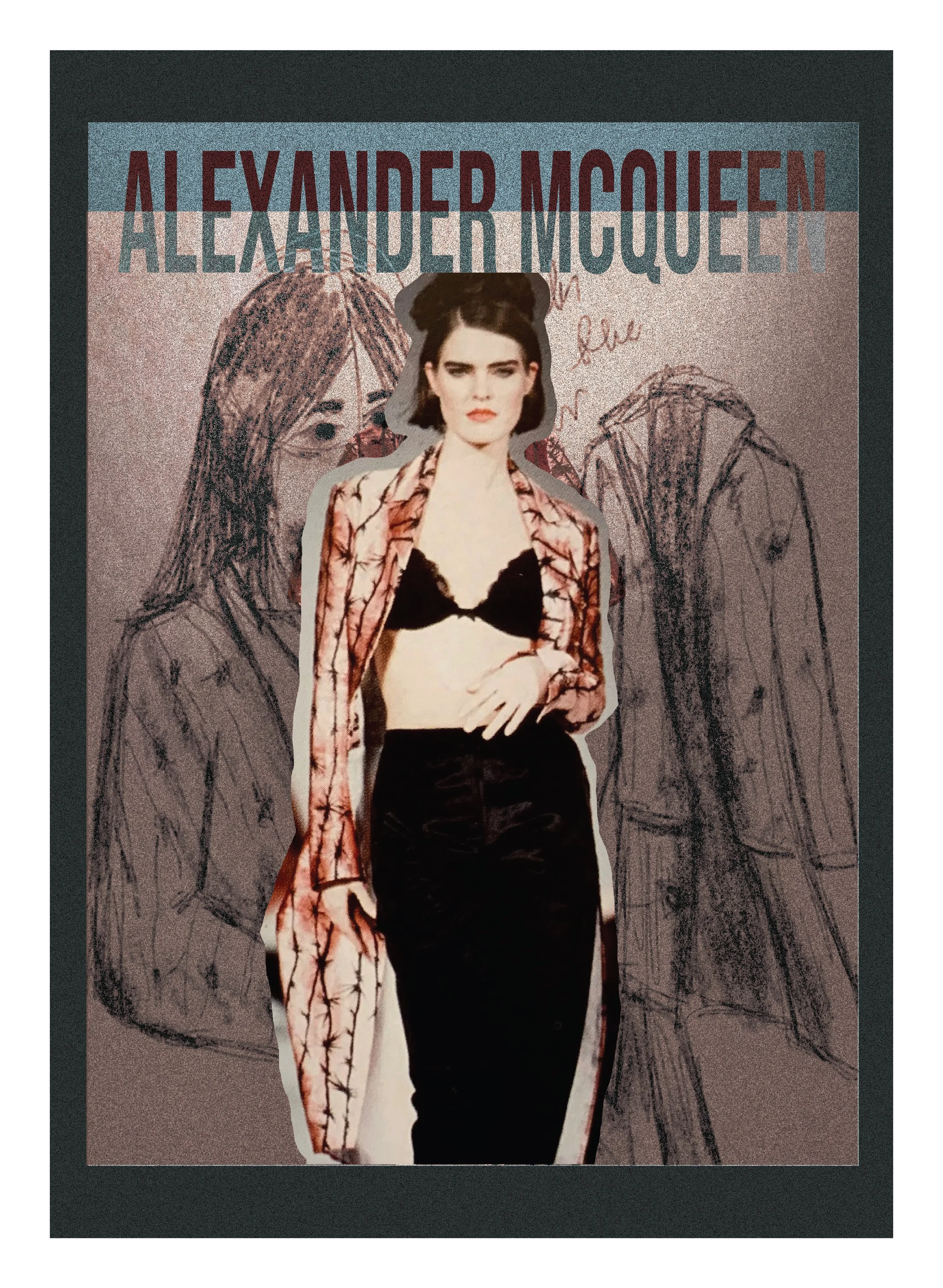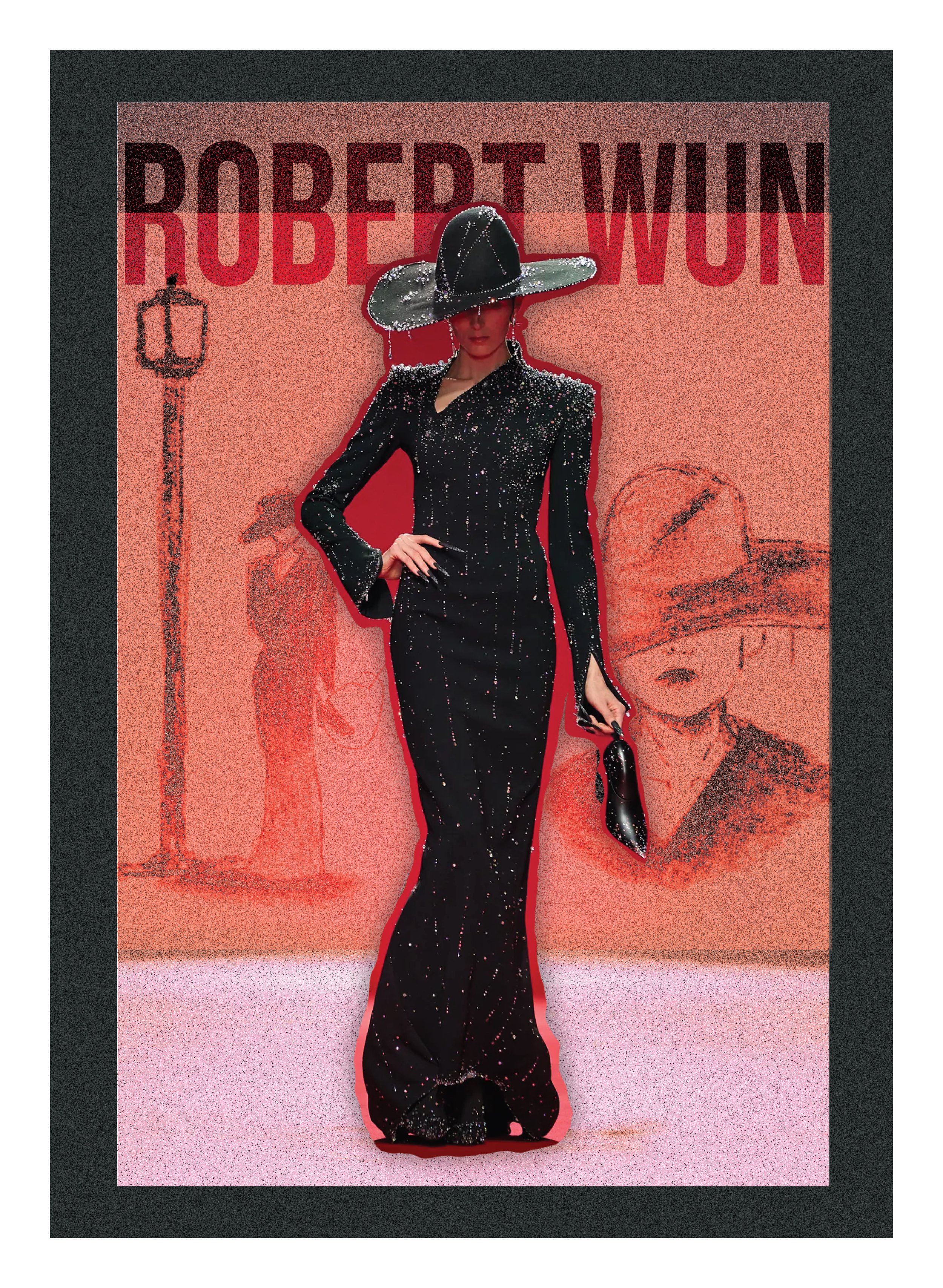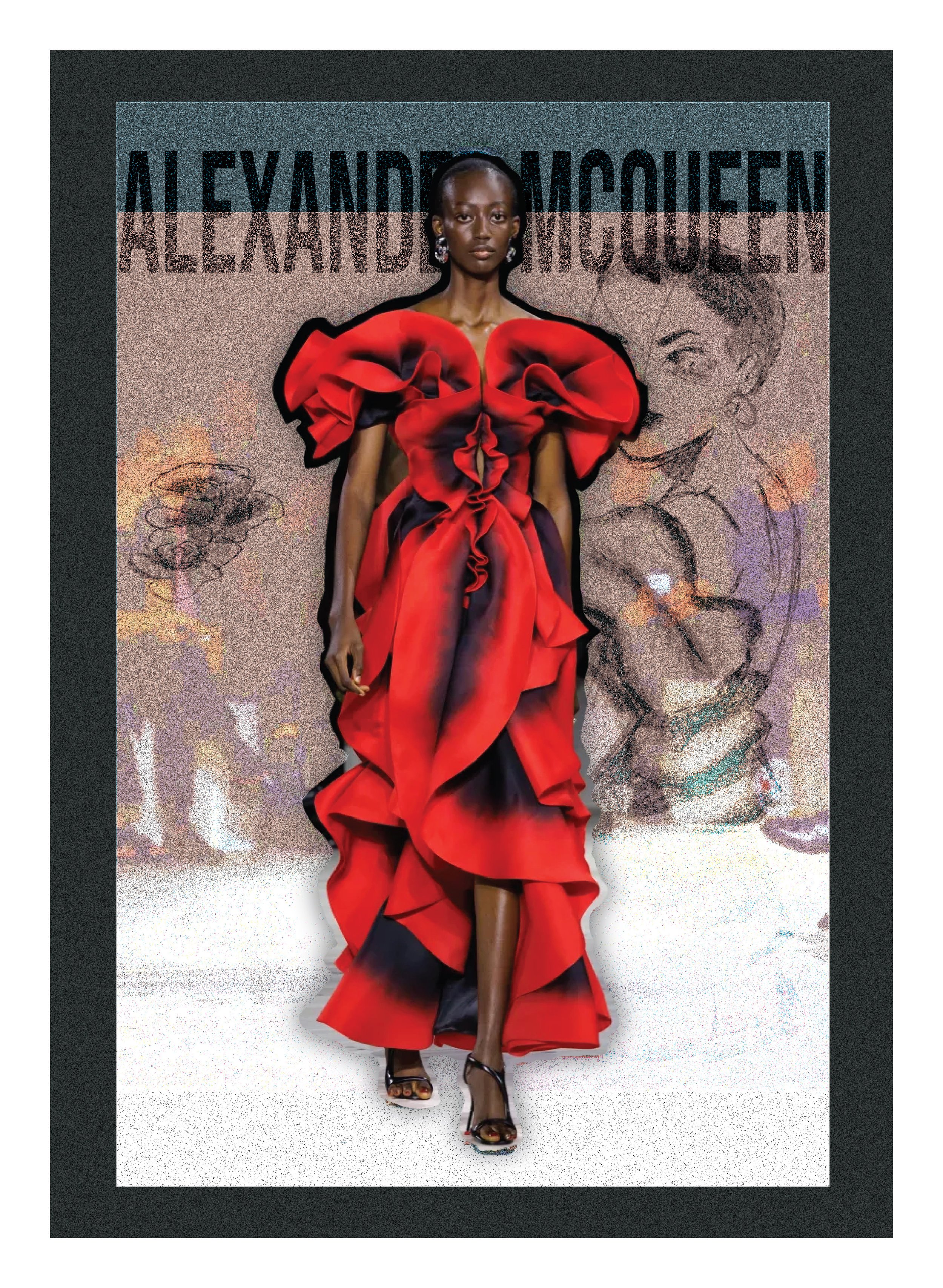Wun Screams (Mc)Queen
Haute couture is a family tree. Designers inherit their brand's history and house codes — a standard they use to evolve the brand’s identity — through a vast network of inspiration. It is borne of referencing and self-referencing, where signature artistic techniques and symbols demarcate the artistry of a designer.
Archival fashion, then, documents the history of haute couture – of contemporaries who found inspiration in one another and modern-day pioneers guided by their innovative forebearers. As brands phase in and out of existence, the lasting legacy of designers resides in those who came after them. Perhaps that is what is so fascinating in examining Alexander McQueen’s influence on Robert Wun: it is an embodiment of legacy as much as ingenuity.
Much of that legacy lies in Alexander McQueen’s unabashed embrace of controversy. His morbid fascination with murder and sexuality is personified by his debut collection, Jack the Ripper Stalks His Victims. Deriving inspiration from the eponymous killer and his victims, the prostitutes of the Victorian era, McQueen showcased designs that featured red beading as spattered blood and garments partially consumed by fire. Yet, perhaps the most shocking and grotesque piece from the collection is a pink silk satin frock with human hair encased in the lining.
Its meaning lies in its morbid history. Human hair, usually in the form of jewelry, was a popular accessory in the Victorian era. At the height of Romanticism, human hair jewelry was a symbol of life or preservation of life after death and was crafted as love tokens or in memoriam. To speak of romance in the same breath as one of England’s most notorious serial killers is an act of sheer audacity. Yet, that is the very novelty of innovators like McQueen. By unraveling Jack the Ripper’s twisted obsession with prostitutes into threads of love and violence, McQueen created a dialogue that polite society preferred to ignore, both in the Victorian era and the modern day. Just as the brutality of Jack the Ripper’s crimes was often overlooked at the time due to the victims’ occupations, sex workers are often demonized in the modern day as morally deficient. While this is an undeniably controversial issue, this collection began McQueen’s decades-long role as a provocateur, creating resplendent works of art that expanded the cultural consciousness.
Decades later, it feels as if McQueen’s debut has become fully realized. There is something profoundly striking about the opening look of Robert Wun’s Haute Couture Spring/Summer 2024 Collection, For Love. The model sways – dashes of crystal dripping from the brim of her hat. Those crystals streak through her black dress, glistening like tears. When she lies deadly still, she is a lone silhouette, an obsidian-cut figure in the pouring crystal rain. It is a stark introduction to Wun’s theme: What would we do for Love?
At a surface level, Wun’s answer is quite dark. A dress overtaken by fire (reminiscent of McQueen) suggests self-immolation, harkening to the sacrifices made for loved ones. One half of a pristine white hat is crystallized in scarlet as if the model is undergoing a lobotomy, a tongue-in-cheek reference to the familiar refrain, “This love is crazy.” Throughout the collection, the romantic and the horrific become so intertwined that they are virtually indistinguishable. Love is horror, and horror is love.
These dualities of the beautiful and the grotesque are recurring motifs in Wun’s collections. His Paris debut collection, entitled Fear, spoke to overcoming those very fears. Heavily distressed garments, ripped and torn at the seams, show Wun embracing imperfection. These imperfections symbolize the mistakes he was terrified of making in his debut, being on a global stage for the first time. Haute couture is known for its meticulousness, showcasing painstaking handmade designs. By incorporating elements of distortion, such as wine stains across a white dress or a broken heel, Wun elevates these mistakes into an art form, transforming fear into courage.
These subtle meanings of love and bravery are all the more intriguing because they are not quite as obvious. Especially in haute couture, beauty is commonplace. Each collection is a masterwork of technical prowess, such that it is easy to categorize and even dismiss pieces as simply “beautiful,” overshadowing any deeper meaning. Where overt beauty can lull viewers, fitting squarely into their concept of fashion, grotesque or graphic designs are a shock to the senses, provoking outrage and discussion.
It is intriguing to see how up-and-coming designers like Wun choose to follow in the hallowed footsteps of McQueen. There is often a certain safety in creating more classically beautiful pieces; even if they demonstrate technical complexity, they conform to standards in line with commercial viability and marketability. As capital is often a struggle for up-and-coming brands without established clientele or ethos, designers like Wun represent a new generation of boundary pushers in the vein of Alexander McQueen. In authentically (and horrifically) documenting both fear and love, Wun discovers new depths in the meaning of courage and sacrifice.
Written by Athul Mohanram, Design: Aranza Carreno, Social Media: Ellianah Murcia, Styling: Cindy Chen & Acelyn Hudson




